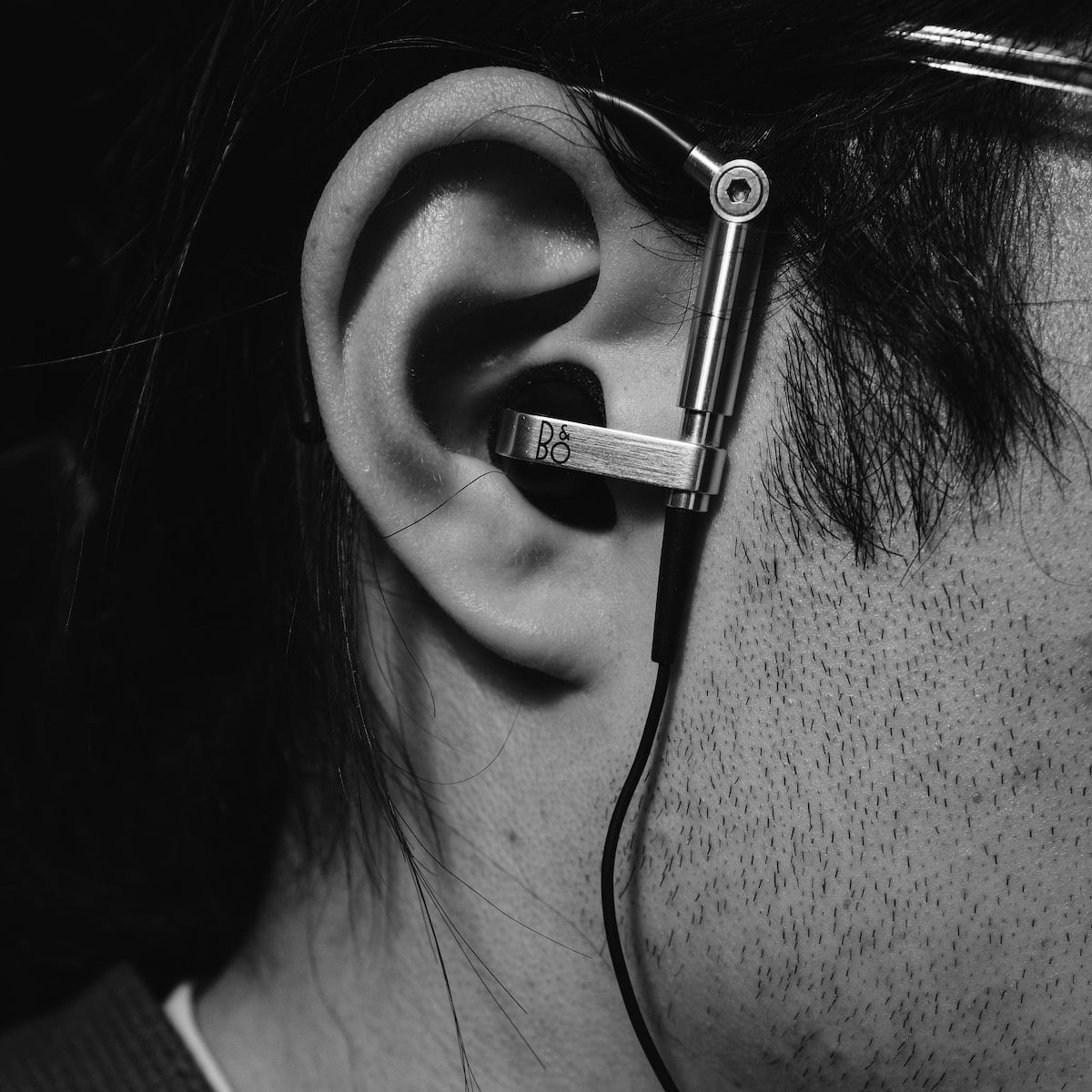Children’s Ear Woes: Understanding and Identifying the Symptoms of Ear Infections
Ear infections are a common health issue that affects children of all ages. Often, parents find it challenging to identify the symptoms and understand the causes of these ear woes. In this article, we will delve into the world of children’s ear infections, exploring their causes, symptoms, and treatment options. By familiarizing ourselves with these aspects, parents and caregivers can better support their children’s health and well-being.
What is an Ear Infection?
An ear infection, also known as otitis media, occurs when bacteria or viruses cause inflammation and infection in the middle ear. The middle ear is the small, air-filled space behind the eardrum. This condition is particularly prevalent among children due to their anatomy. The Eustachian tubes, which connect the middle ear to the back of the throat, are shorter and more horizontal in children, making it easier for bacteria or viruses to enter and cause infection.
Expanded Paragraph:
An ear infection is a common condition in which the middle ear becomes inflamed and infected. It is typically caused by bacteria or viruses that enter the middle ear and lead to inflammation. The middle ear is the part of the ear located behind the eardrum, and it contains small bones that transmit sound vibrations to the inner ear. In children, the Eustachian tubes, which connect the middle ear to the back of the throat, are shorter and more horizontal compared to adults. This anatomical difference makes it easier for bacteria or viruses to travel from the throat to the middle ear, leading to a higher susceptibility to ear infections.
During an ear infection, the Eustachian tubes may become blocked or swollen, preventing proper drainage of fluid from the middle ear. The trapped fluid creates an ideal environment for bacteria or viruses to multiply, leading to infection. This infection can cause pain, discomfort, and other symptoms that can significantly impact a child’s well-being. Understanding the causes and symptoms of ear infections is essential for parents and caregivers to provide appropriate care and seek medical attention when necessary.
Common Causes of Ear Infections
Several factors contribute to the development of ear infections in children. Understanding these causes can help parents take preventive measures to reduce the occurrence of such infections. Here are some common causes:
-
Upper Respiratory Infections: The common cold, flu, or other respiratory infections can lead to ear infections. The bacteria or viruses that cause these respiratory illnesses can also affect the ears.
-
Allergies: Allergic reactions can cause swelling and blockage of the Eustachian tubes, leading to fluid accumulation and subsequent infection in the middle ear.
-
Infected Adenoids: Adenoids are small tissues located at the back of the nasal cavity. When infected, they can obstruct the Eustachian tubes and contribute to ear infections.
-
Secondhand Smoke: Exposure to secondhand smoke has been found to increase the risk of ear infections in children. The harmful chemicals in smoke can irritate and inflame the ear passages.
-
Bottle-feeding: Children who are bottle-fed, especially while lying down, have a higher risk of developing ear infections. The flow of milk can enter the Eustachian tubes, promoting bacterial growth.
Expanded Paragraph:
Ear infections in children can have various causes, and understanding these causes can help parents take preventive measures to reduce the likelihood of their child experiencing an ear infection. One common cause is upper respiratory infections, such as the common cold, flu, or other respiratory illnesses. These infections can lead to the development of ear infections as the bacteria or viruses responsible for respiratory illnesses can also affect the ears. It is important for parents to be aware of this connection and take appropriate precautions to minimize the risk.
Allergies can also contribute to the occurrence of ear infections. When a child experiences an allergic reaction, the Eustachian tubes can become swollen and blocked. This blockage prevents proper drainage of fluid from the middle ear, providing an environment for bacteria to multiply and cause infection. It is crucial for parents to identify and manage their child’s allergies to reduce the chances of ear infections.
Infected adenoids, which are small tissues located at the back of the nasal cavity, can also play a role in the development of ear infections. When the adenoids become infected, they can obstruct the Eustachian tubes, leading to fluid accumulation and subsequent infection in the middle ear. Parents should be aware of the potential impact of infected adenoids on their child’s ear health and seek appropriate medical attention if necessary.
Exposure to secondhand smoke is another significant risk factor for ear infections in children. The harmful chemicals present in smoke can irritate and inflame the ear passages, making them more susceptible to infection. To reduce the risk, parents should create a smoke-free environment at home and in the car, ensuring their child is not exposed to secondhand smoke.
Additionally, bottle-feeding, especially in a lying down position, can increase the risk of ear infections in children. When a child drinks from a bottle while lying down, the flow of milk can enter the Eustachian tubes, promoting the growth of bacteria. Parents should be mindful of their child’s feeding position and try to keep them upright during bottle-feeding to minimize the chances of milk entering the Eustachian tubes.
Identifying Symptoms of Ear Infection
Recognizing the symptoms of an ear infection is crucial in seeking timely medical attention and providing appropriate care for children. If your child exhibits any of the following signs, it is advisable to consult a healthcare professional:
-
Ear Pain: Children with ear infections often experience pain or discomfort in one or both ears. They may tug at their ears or complain of a throbbing sensation.
-
Fever: Fever is a common symptom of an ear infection. If your child has an unexplained fever along with other signs, it could be indicative of an underlying ear infection.
-
Irritability and Restlessness: Young children may become fussy, irritable, or have difficulty sleeping due to the pain and discomfort caused by an ear infection.
-
Fluid Discharge: In some cases, ear infections can cause a discharge of fluid from the affected ear. The fluid may be clear, yellow, or even bloody.
-
Hearing Problems: Temporary hearing loss or muffled hearing can occur as a result of an ear infection. This may cause children to have difficulty following conversations or responding to sounds.
-
Loss of Appetite: Children with ear infections may experience a decreased appetite due to the pain and pressure in their ears.
Expanded Paragraph:
Identifying the symptoms of an ear infection is essential for parents and caregivers to provide appropriate care and seek medical attention when necessary. One of the most common symptoms of an ear infection in children is ear pain. Children may experience pain or discomfort in one or both ears, and they may tug at their ears or complain of a throbbing sensation. It is important for parents to pay attention to any signs of ear pain and take prompt action.
Fever is another common symptom associated with ear infections. If a child has an unexplained fever along with other signs, it could be indicative of an underlying ear infection. It is crucial for parents to monitor their child’s temperature and consult a healthcare professional if a fever is present.
Young children with ear infections may exhibit irritability and restlessness. The pain and discomfort caused by an ear infection can make them fussy and irritable, and they may have difficulty sleeping. Parents should be attentive to any changes in their child’s behavior and seek medical advice if necessary.
In some cases, ear infections can cause a discharge of fluid from the affected ear. The fluid may be clear, yellow, or even bloody. If parents notice any fluid discharge from their child’s ear, it is important to consult a healthcare professional for proper diagnosis and treatment.
Temporary hearing problems can also occur as a result of an ear infection. The infection and inflammation can affect the child’s ability to hear clearly, leading to muffled hearing or even temporary hearing loss. Parents should be aware of any changes in their child’s hearing ability and seek medical attention if necessary.
Loss of appetite is another symptom that children with ear infections may experience. The pain and pressure in their ears can make it uncomfortable for them to eat, resulting in a decreased appetite. Parents should encourage their child to stay hydrated and offer foods that are easy to eat and digest.
Seeking Medical Treatment
If you suspect that your child has an ear infection, it is essential to consult a healthcare professional for an accurate diagnosis and appropriate treatment. The healthcare provider will examine the child’s ears using a special instrument called an otoscope to assess the condition of the eardrum and check for signs of infection.
Depending on the severity of the infection, the healthcare professional may recommend one or more of the following treatment options:
-
Antibiotics: If the ear infection is bacterial, antibiotics may be prescribed to eliminate the infection. It is crucial to complete the full course of antibiotics as prescribed by the healthcare professional.
-
Pain Relief: Over-the-counter pain relievers, such as acetaminophen or ibuprofen, can help alleviate the discomfort associated with an ear infection. However, it is essential to consult the healthcare professional before administering any medication to your child.
-
Warm Compresses: Applying a warm compress to the affected ear can help reduce pain and inflammation. Ensure that the compress is not too hot and gently place it against the ear for a few minutes at a time.
In severe cases or recurrent infections, the healthcare professional may suggest additional interventions, such as the insertion of ear tubes or the removal of infected adenoids, to prevent further complications.
Expanded Paragraph:
If parents suspect that their child has an ear infection, seeking medical treatment is crucial for an accurate diagnosis and appropriate care. A healthcare professional, such as a pediatrician or an otolaryngologist, will evaluate the child’s symptoms and perform a physical examination. During the examination, the healthcare provider will use an otoscope, a special instrument with a light and magnifying lens, to look inside the child’s ears and assess the condition of the eardrum.
Depending on the severity and cause of the ear infection, the healthcare professional may recommend different treatment options. If the infection is bacterial, antibiotics may be prescribed to eliminate the bacteria and clear the infection. It is important for parents to ensure that the child completes the full course of antibiotics as prescribed, even if the symptoms improve before the medication is finished. This helps prevent the development of antibiotic resistance and ensures effective treatment.
In addition to antibiotics, over-the-counter pain relievers such as acetaminophen or ibuprofen can be used to alleviate the pain and discomfort associated with an ear infection. However, it is essential to consult the healthcare professional before administering any medication to a child to ensure appropriate dosage and safety.
Applying warm compresses to the affected ear can also provide relief by reducing pain and inflammation. Parents can gently place a warm compress against the ear for a few minutes at a time, ensuring that it is not too hot to avoid burning the skin. The warmth can help soothe the child’s ear and promote healing.
In severe cases or when ear infections are recurrent, the healthcare professional may suggest additional interventions. For instance, the insertion of ear tubes may be recommended to help equalize pressure in the middle ear and prevent fluid buildup. In some cases, the removal of infected adenoids may be necessary to improve the child’s ear health. These interventions are typically considered when other treatment options have not been effective or when there is a risk of complications.
Preventive Measures
While it may not be possible to prevent all ear infections, there are several measures parents can take to reduce the risk and frequency of these infections:
-
Breastfeeding: If possible, breastfeeding provides essential antibodies that can help strengthen a child’s immune system, reducing the likelihood of infections.
-
Avoid Secondhand Smoke: Protecting children from exposure to secondhand smoke can significantly lower their risk of developing ear infections. Ensure a smoke-free environment at home and in the car.
-
Vaccinations: Keeping up with recommended vaccinations can help prevent certain infections, such as influenza and pneumococcus, which can lead to ear infections.
-
Practice Good Hygiene: Encourage regular handwashing to prevent the spread of germs that can cause respiratory infections and subsequent ear infections.
-
Limit Pacifier Use: Excessive and prolonged pacifier use can increase the risk of ear infections. Gradually reduce the use of pacifiers as children grow older.
-
Avoid Bottle-feeding in a Lying Down Position: If bottle-feeding, ensure that the child is in an upright position to minimize the chances of milk entering the Eustachian tubes.
Expanded Paragraph:
While it may not be possible to prevent all ear infections, there are preventive measures that
parents can take to reduce the risk and frequency of these infections. Here are some preventive measures:
Breastfeeding is beneficial in reducing the likelihood of ear infections. Breast milk provides essential antibodies that can help strengthen a child’s immune system, making them less susceptible to infections.
Protecting children from exposure to secondhand smoke is important. Secondhand smoke can significantly increase the risk of ear infections. Parents should create a smoke-free environment at home and in the car to minimize exposure.
Keeping up with recommended vaccinations can help prevent certain infections that can lead to ear infections. Vaccines for influenza and pneumococcus, for example, can reduce the risk of ear infections.
Practicing good hygiene habits is crucial in preventing the spread of germs that can cause respiratory infections and subsequent ear infections. Regular handwashing is highly recommended, especially during cold and flu seasons.
Limiting pacifier use can help reduce the risk of ear infections. Excessive and prolonged pacifier use can increase the chances of bacteria entering the Eustachian tubes. Gradually reducing pacifier use as children grow older is advisable.
Avoiding bottle-feeding in a lying down position can minimize the chances of milk entering the Eustachian tubes and promoting bacterial growth. Parents should ensure that the child is in an upright position during bottle-feeding.







